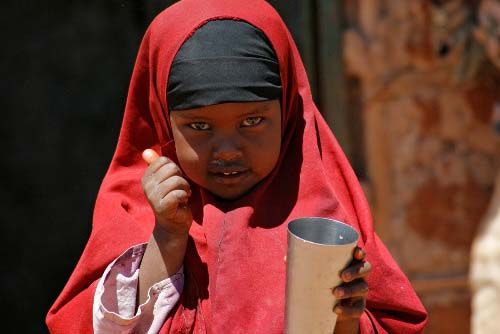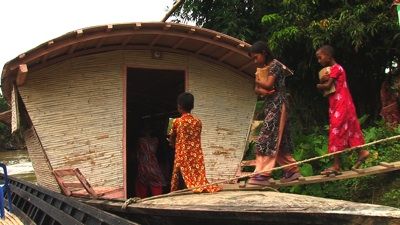Common Core Standards:
CCSS.ELA-Literacy.RH.11-12.1: Cite specific textual evidence to support analysis of primary and secondary sources, connecting insights gained from specific details to an understanding of the text as a whole.
CCSS.ELA-Literacy.RH.11-12.2: Determine the central ideas or information of a primary or secondary source; provide an accurate summary that makes clear the relationships among the key details and ideas.
CCSS.ELA-Literacy.RH.11-12.6: Evaluate authors' differing points of view on the same historical event or issue by assessing the authors' claims, reasoning, and evidence.
CCSS.ELA-Literacy.RH.11-12.7: Integrate and evaluate multiple sources of information presented in diverse formats and media (e.g., visually, quantitatively, as well as in words) in order to address a question or solve a problem.
CCSS.ELA-Literacy.RH.11-12.9: Integrate information from diverse sources, both primary and secondary, into a coherent understanding of an idea or event, noting discrepancies among sources.
CCSS.ELA-Literacy.CCRA.R.3: Analyze how and why individuals, events, or ideas develop and interact over the course of a text.
CCSS.ELA-Literacy.SL.11-12.1: Initiate and participate effectively in a range of collaborative discussions (one-on-one, in groups, and teacher-led) with diverse partners on grades 11-12 topics, texts, and issues, building on others' ideas and expressing their own clearly and persuasively.
CCSS.ELA-Literacy.SL.11-12.5: Make strategic use of digital media (e.g., textual, graphical, audio, visual, and interactive elements) in presentations to enhance understanding of findings, reasoning, and evidence and to add interest.
CCSS.ELA-Literacy.W.11-12.2: Write informative/explanatory texts to examine and convey complex ideas, concepts, and information clearly and accurately through the effective selection, organization, and analysis of content.
CCSS.ELA-Literacy.RI.8.3: Analyze how a text makes connections among and distinctions between individuals, ideas, or events (e.g., through comparisons, analogies, or categories).
Content:
-
Informational text on the Pulitzer Center Downstream Gateway
-
Effect of the world’s population explosion on access to water
-
Lima, Peru’s problems in providing water to the people
-
Environmental causes of water shortages
-
Human causes of water shortages
-
Solutions to global water shortages of clean, safe water
-
International bulk water sales for a profit
-
Maintaining clean, safe water
Skills and Strategies:
-
Examine and explain the difference in the authors’ points of view on access to safe and clean water in multiple texts.
-
Explain how the authors respond to conflicting points of view.
-
Analyze the connections that a text makes among ideas and events and make connections to ideas and events from own background knowledge.
-
Analyze the relationships among the ideas expressed by multiple authors about access to water.
-
Integrate information from diverse primary and secondary sources into a coherent understanding of an idea or event, noting discrepancies among sources.
-
Write informative/explanatory texts to examine and convey complex ideas, concepts, and information clearly and accurately through the effective selection, organization, and analysis of content.
-
Assess the extent to which the reasoning and evidence in a text support the author’s claims.
-
Make strategic use of digital media (e.g., textual, graphical, audio, visual, and interactive elements) in presentations to enhance understanding of findings, reasoning.
Key Terms:
-
Global Warming
-
Nomads
-
Semi-desert conditions
-
Windbreak
-
Shantytowns
-
Glaciologist
-
Fog catchers
-
Cistern
-
Ecologist
-
Watershed
-
Turpidity
-
Water Hub
-
Water bags
-
Desalinate
-
Bulk water purveyors
-
Privatization of water
Learning Plans and Activities:
-
Conduct group discussions outlining the benefits and drawbacks of the selling of bulk water from U.S. to other countries. Use a collaborative tool such as Etherpad to collect thoughts and opinions and analyze data.
-
Use WolframAlpha and World Mapper to collect data on world-wide access to clean, safe water.
-
Research online for international conferences that examine access to water such as The Cloud Institute on Sustainability Education. Download form to apply to present a policy brief at the conference. Create the policy brief on a class wiki for everyone to participate. Concentrate on access to clean, safe water and the ethics of privatizing and selling water and solutions to the problems presented.
-
Interview of individuals involved in making sure that the water supply where you live is clean, safe, and available to everyone. Use Digital Storytelling Wiki to share the interview and information on a class or school website.
-
Create a blog that can be maintained by the discussion groups to obtain information and opinions from people around the world.
Assessments:
-
Collection of benefits and drawbacks of selling bulk water with data analysis.
-
Charts, graphs, and data created on WolframAlpha and World Mapper to indicate the availability of safe, clean water for all world-wide.
-
Policy brief on a class wiki that will be shared at an international conference.
-
Digital Storytelling Interviews and information collected problems with the world’s water supply and access.
-
Analysis of discussions on the blogs and list and explanation of possible solutions to the problem of free access to safe and clean water world-wide.
Resources:
-
Dan Grossman. “Holding Back the Gobi.” National Geographic. Jan. 30, 2011
-
Dan Grossman. “Lima’s Brown Coast.” National Geographic. May 22, 2011
-
Dan Grossman. “Waiting for Water.” National Geographic. May 23, 2011
-
Dan Grossman. “How Will Lima Slake Its Thirst?” National Geographic. May 22, 2011
-
Peter Sawyer and Stephen Sapienza. “Fight for Water Hits Crisis Levels Worldwide.” Voice of America. March 22, 2011
-
Video clips on water sanitation in Bangladesh: Dhaka's Challenge
-
Kate Seche and Peter Sawyer. Lesson Plan: “The Global Water Crisis.” Feb. 2, 2011
-
Stephen Sapienza. “As Bangladesh’s Population Grows, Slum Dwellers Struggle for Clean Water Access,” PBS Newshour. March 22, 2011
-
“New York City’s Water Maintenance.” January 14, 2011
-
Xibo Chen. “Water Affects the People and Controls Us.” Jan. 6, 2011
-
Fred De Sam Lazaro. “India’s Growing Population Strains Water Supply.” PBS Newshour. Dec. 29, 2010
-
The Pulitzer Center Student Journalism Challenge: Global Water. March 10, 2012
-
Fred De Sam Lazaro. “Delhi’s Dilemma: Numbers, Limited Water.” Dec. 26, 2010
-
David Zetland. "The End of Abundance." Nov. 24, 2010
-
Brett Walton. “Bulk Water Company Plans to Export to India, East Asia and the Caribbean.” Circle of Blue. Aug. 27, 2010
-
Janeen Interlandi. “The New Oil.” Newsweek. Oct. 8, 2010
This unit has been designed for grades 9-12. The recommended timeframe is 4-6 weeks.This curriculum was created by Dr. Heidi Hayes Jacobs and her Curriculum 21 faculty.







